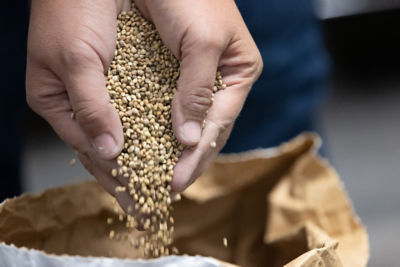Causal Agent
Meloidogyne spp.
Distribution
Worldwide
Symptoms
Small, swollen galls 1-2 mm (0.06 in.) in diameter can be found on the roots when infected plants are carefully lifted from the ground and freed from soil particles without damaging the roots. Depending on the species causing infection, the shape of the galls can be round or spindly, and with or without short root branches that rise from the upper part of galls. It is often possible to see white to dark brown egg masses on the surface of the roots. Above ground symptoms may include stunting and yellowing that resembles water and nutrient deficiency and poor or irregular plant stands.
 Extensive branching of an infected root system. Healthy plant (left) and infected plant (right).
Extensive branching of an infected root system. Healthy plant (left) and infected plant (right).
Conditions for Development
Damage is more severe in sandy and muck soils than in clay soils. Temperatures for infection range from 10-35°C (50-95°F). However, Meloidogyne spp. are inactive above 40°C (104°F) or below 5°C (41°F). The nematodes are moved within and between fields by irrigation water or cultivation equipment, and can be introduced into fields in vegetative material such as bulbs and transplants.
Control
Soil fumigation, crop rotation to a non-host or a long fallow period helps to reduce populations of root-knot nematodes.




